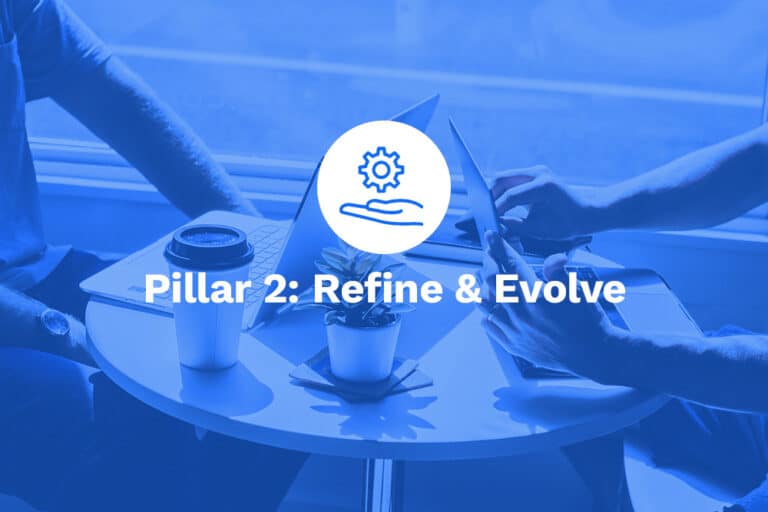Are You Using All 13 Components of Effective Meetings?
At Leader Loop, we’ve observed a common challenge across organizations: most of us don’t realize we’re not running fully optimized meetings. This oversight can lead to wasted time, decreased productivity, and even team frustration. In fact, a study by Atlassian found that the average employee attends 62 meetings per month, with half of those considered time wasted. That’s a lot of potential productivity left on the table!
The problem we’re addressing is simple yet crucial: How can we transform our meetings from necessary evils into powerful tools for collaboration and progress? Let’s explore the key components of effective meetings and how you can implement them.
The 13 Essential Components of Effective Meetings:
- Clear Purpose and Agenda
- Define the meeting’s goal in the invitation
- Distribute a detailed agenda at least 24 hours in advance
- Ensure each agenda item has a clear objective
- Tip: Use action verbs for agenda items (e.g., “Decide on Q3 marketing strategy”)
- Right Participants
- Invite only necessary team members to respect everyone’s time
- Use the RACI model (Responsible, Accountable, Consulted, Informed) to determine attendees
- Consider rotating attendees for recurring meetings to bring fresh perspectives
- Tip: For each agenda item, ask “Who needs to be present for this discussion?”
- Time Management
- Start and end meetings on time, every time
- Time-box agenda items to keep discussions focused
- Use a visible timer to keep everyone aware of time constraints
- Tip: Assign a timekeeper role to ensure discussions stay on track
- Active Participation
- Encourage input from all attendees, not just the vocal ones
- Use techniques like round-robin or breakout sessions to ensure everyone contributes
- Create a safe space for sharing ideas and concerns
- Tip: Start meetings with a quick check-in to get everyone engaged from the beginning
- Action-Oriented Outcomes
- End every meeting with clear, actionable next steps
- Assign specific responsibilities and deadlines for each action item
- Recap decisions and action items in the last 5 minutes of the meeting
- Tip: Use a shared document to record action items in real-time
- Time-Bound Action Items
- Set specific target dates for all actions, not just vague timelines
- Distinguish between short-term and long-term actions
- Use the SMART framework (Specific, Measurable, Achievable, Relevant, Time-bound) for setting action items
- Tip: Follow up on overdue action items before the next meeting
- Decision-Making Focus
- Ensure at least one decision is made in every meeting, no matter how small
- Clearly identify decision points in the agenda
- Use structured decision-making techniques for complex issues
- Tip: End each agenda item by asking, “What decision do we need to make here?”
- Pre-Read Materials
- Provide pre-read materials for meetings when warranted to save discussion time
- Set clear expectations that attendees come prepared having reviewed the materials
- Include specific questions or points to consider in the pre-read
- Tip: Send out pre-reads at least 48 hours before the meeting and start with a quick check-in to ensure everyone has reviewed them
- Effective Facilitation
- Designate a skilled facilitator for each meeting
- Train team members in facilitation techniques to develop leadership skills
- Ensure the facilitator guides the discussion, manages conflict, and keeps the meeting on track
- Tip: Rotate the facilitator role to develop facilitation skills across the team
- Technology Utilization
- Leverage appropriate tools for virtual or hybrid meetings
- Ensure all participants are familiar with the technology being used
- Have a backup plan for technical difficulties
- Tip: Conduct a tech check before important meetings to ensure smooth communication
- Follow-Up and Accountability
- Distribute comprehensive meeting notes promptly, including decisions and time-bound action items
- Use project management tools to track progress on meeting outcomes
- Send reminders for approaching deadlines on action items
- Tip: Start each meeting with a quick review of action items from the previous meeting
- Feedback Loop
- Regularly seek feedback on meeting effectiveness from all participants
- Be open to iterating on your meeting structure based on feedback
- Conduct brief surveys after key meetings to gather improvement ideas
- Tip: Dedicate time in quarterly reviews to discuss and improve meeting processes
- Meeting-Free Time
- Protect blocks of uninterrupted work time for your team
- Implement designated “no meeting” days or hours
- Encourage team members to decline meetings if their presence isn’t crucial
- Tip: Try meeting-free afternoons or specific days of the week to allow for focused work
Recap: Optimizing meetings isn’t just about efficiency—it’s about respecting your team’s time and maximizing collective potential. By implementing these 13 essential components, you can transform your meetings into powerful drivers of progress and collaboration.
At Leader Loop, we believe that effective meetings are a key factor in high-performing teams. By mastering these elements, you’re not just saving time—you’re creating an environment where ideas flourish, decisions are made with clarity, and your team feels valued and heard.
Remember, the goal isn’t just to have meetings—it’s to make meaningful progress. Which of these Leader Loop-championed factors will you implement in your next meeting? The path to more productive, engaging, and results-driven meetings starts now!
About Leader Loop: Leader Loop crafts actionable, competency-focused articles to accelerate your career growth. Our expert-written content provides practical strategies for leadership, team management, and professional development. Whether you’re a seasoned manager or an ambitious individual contributor, our articles deliver the insights you need to excel in today’s workplace.




